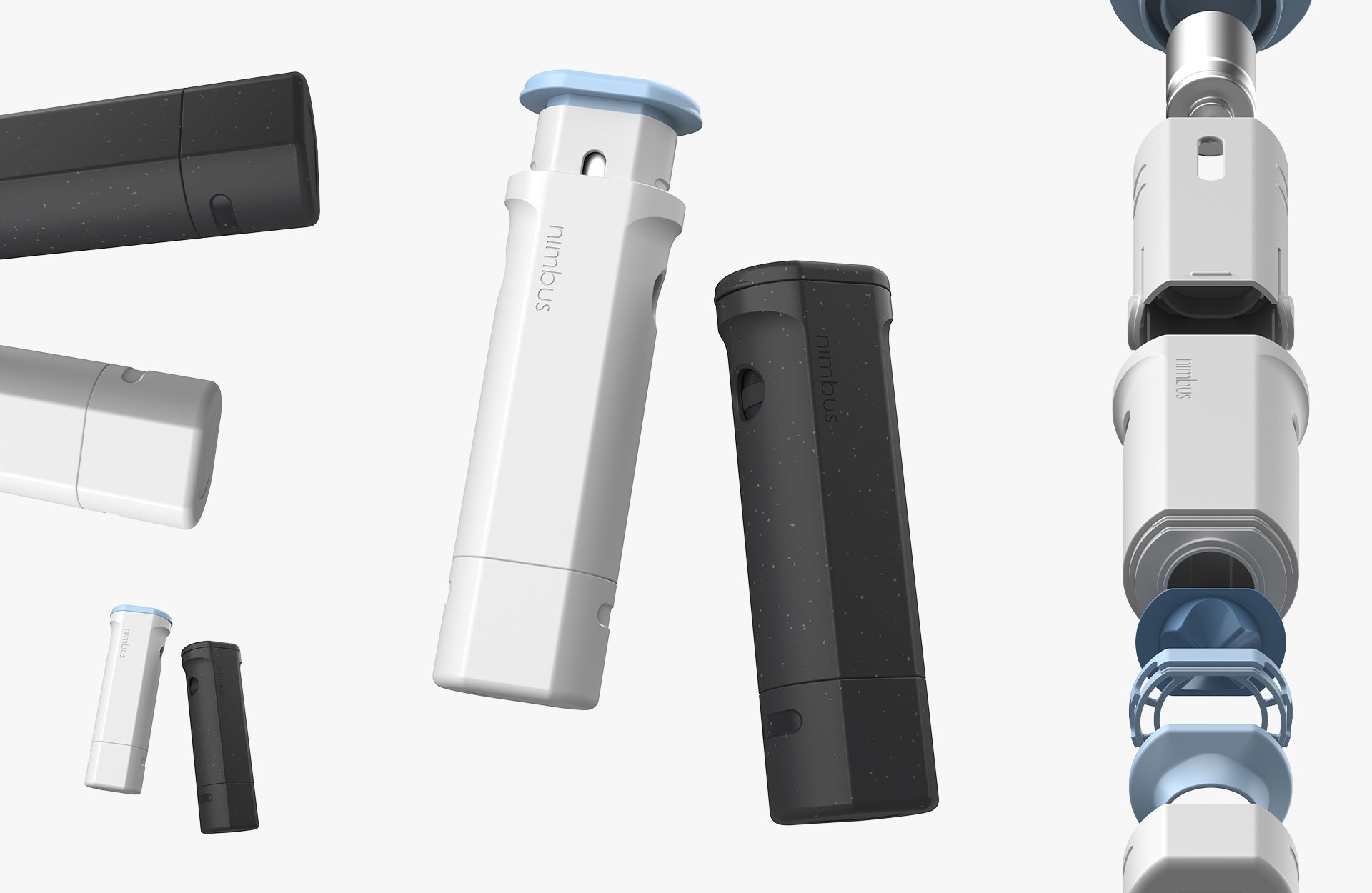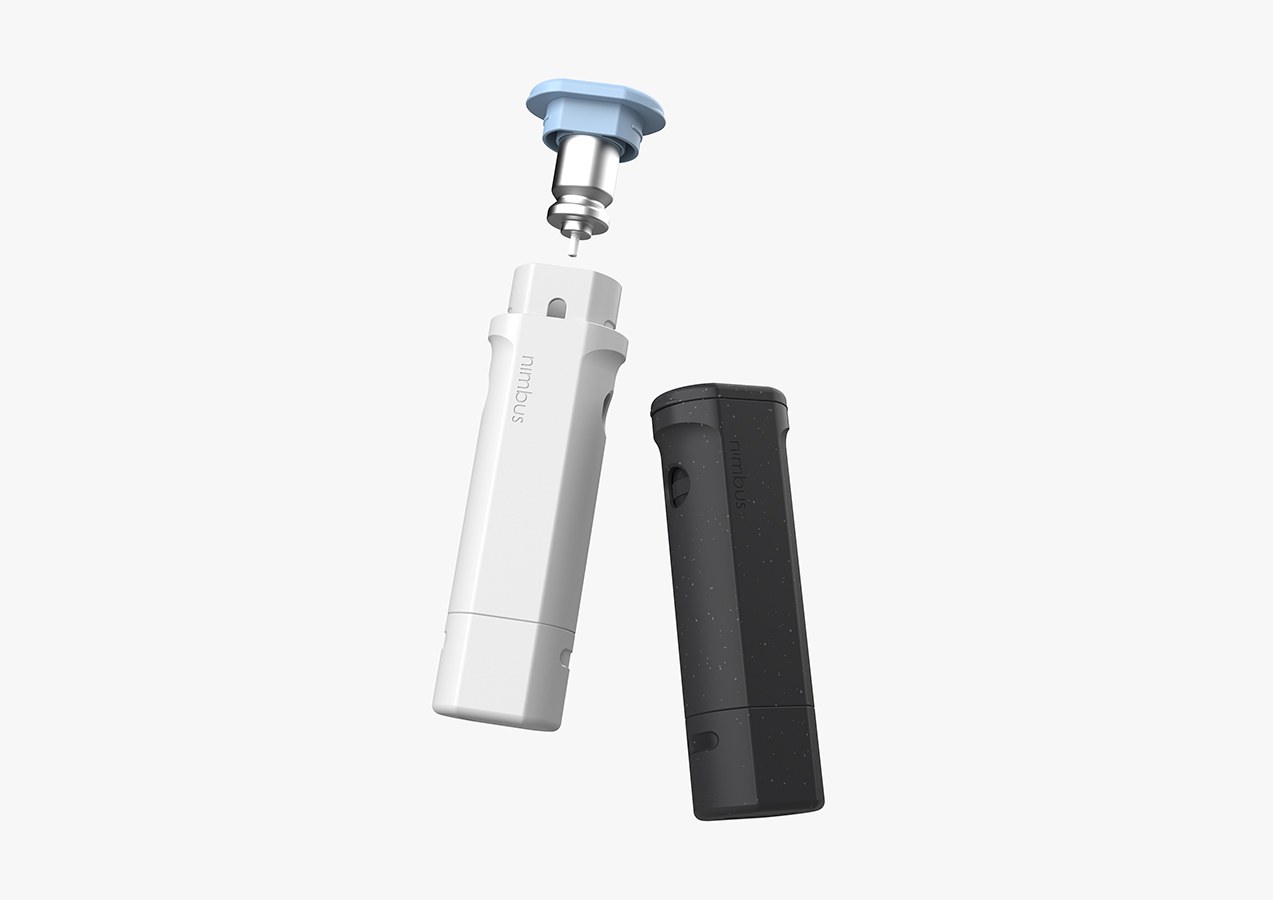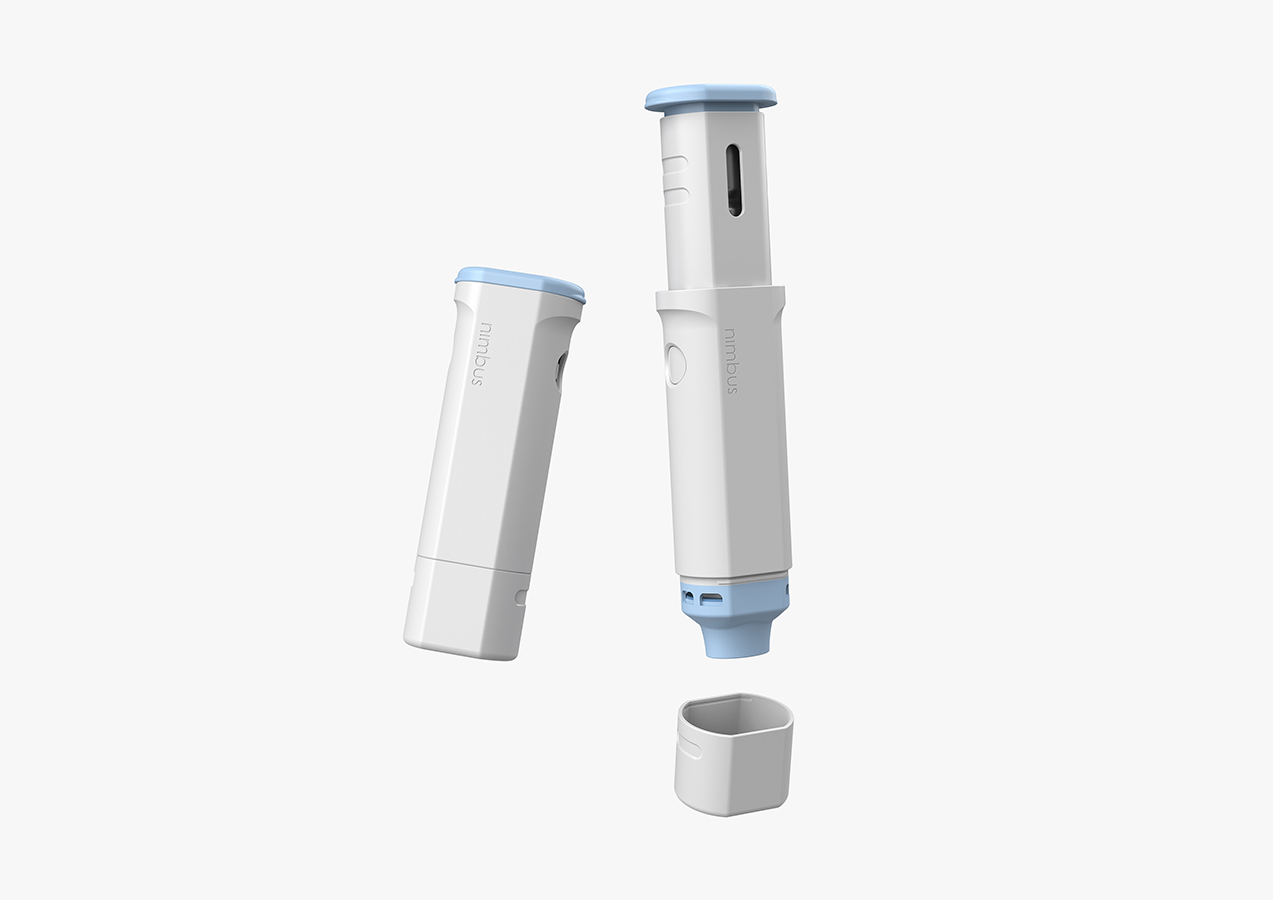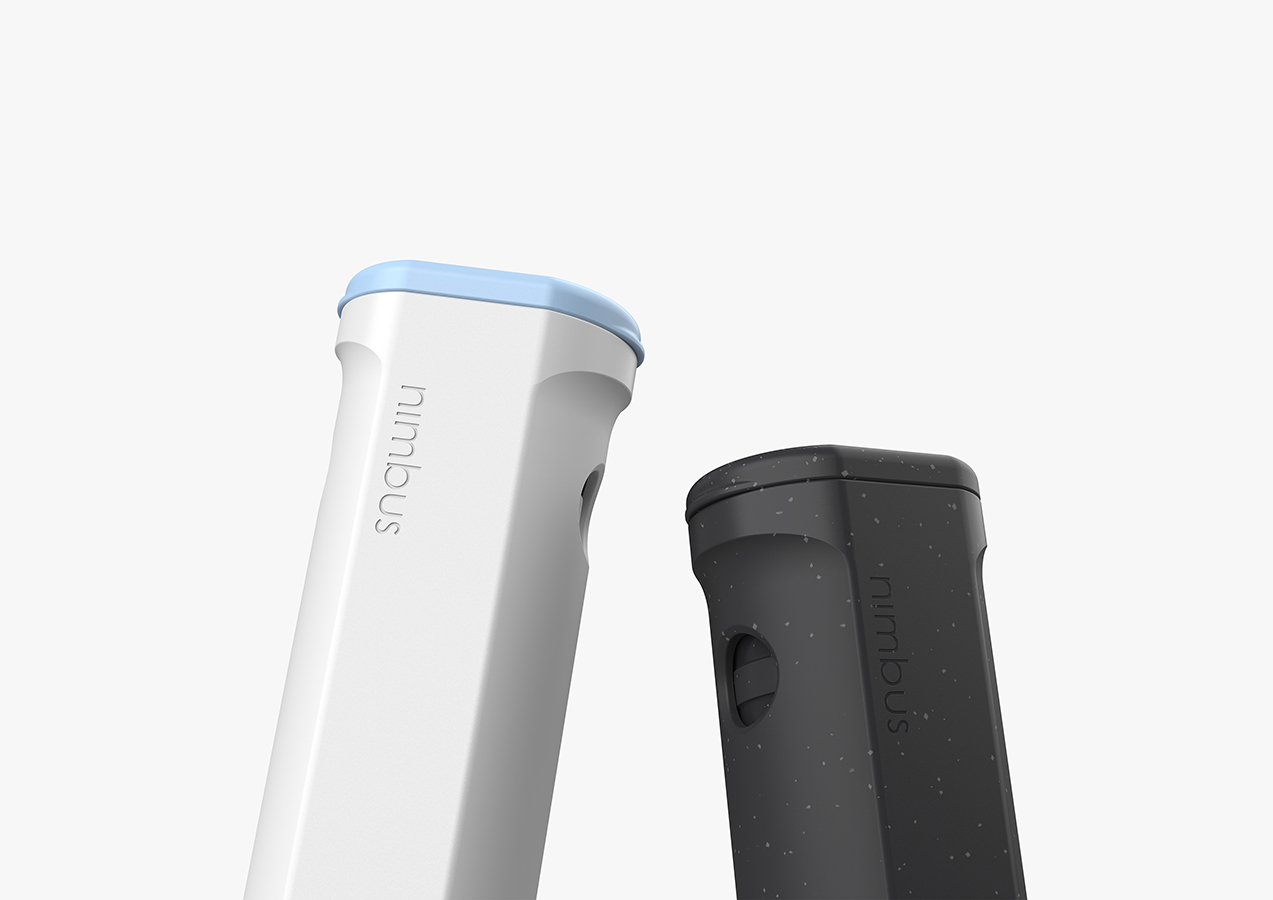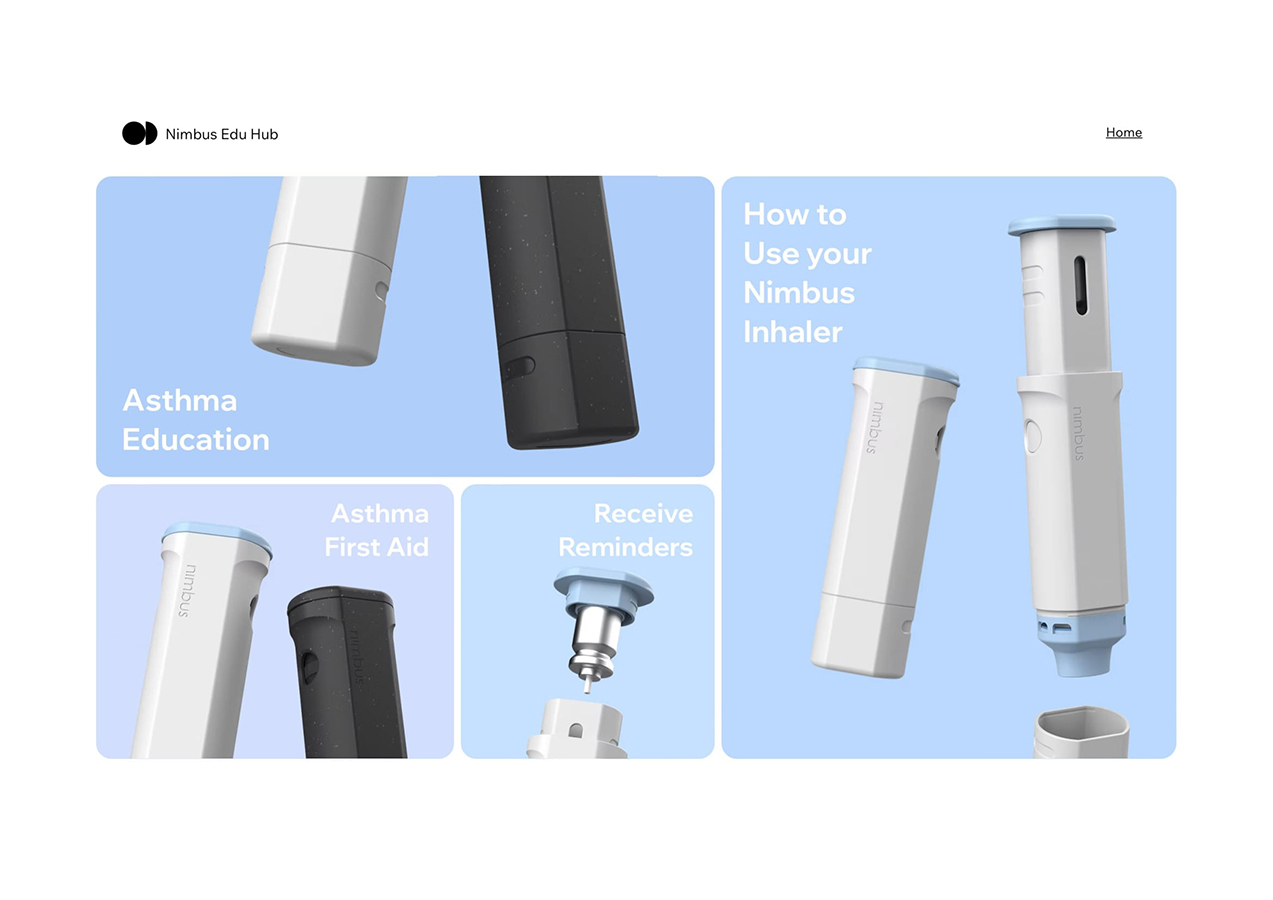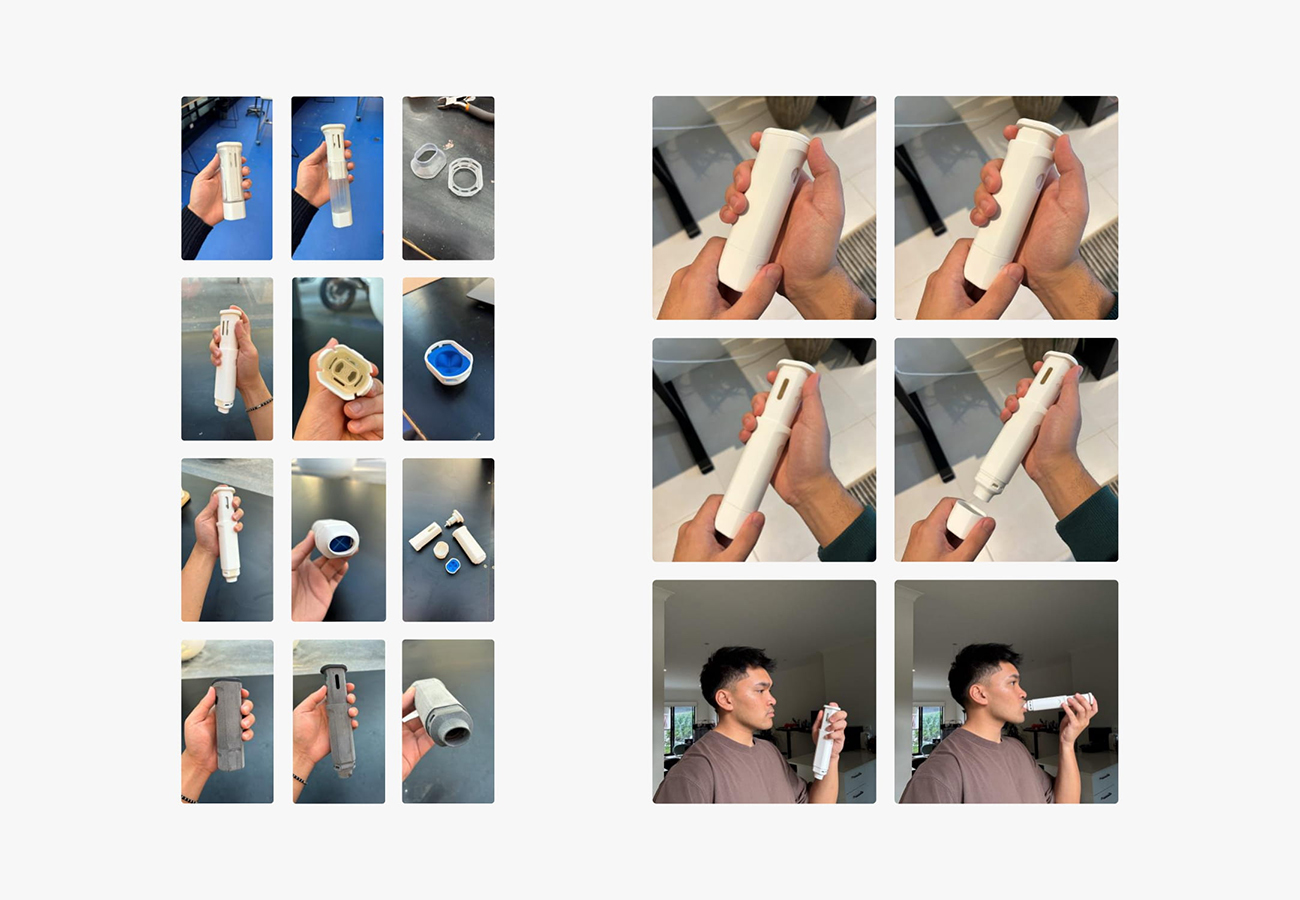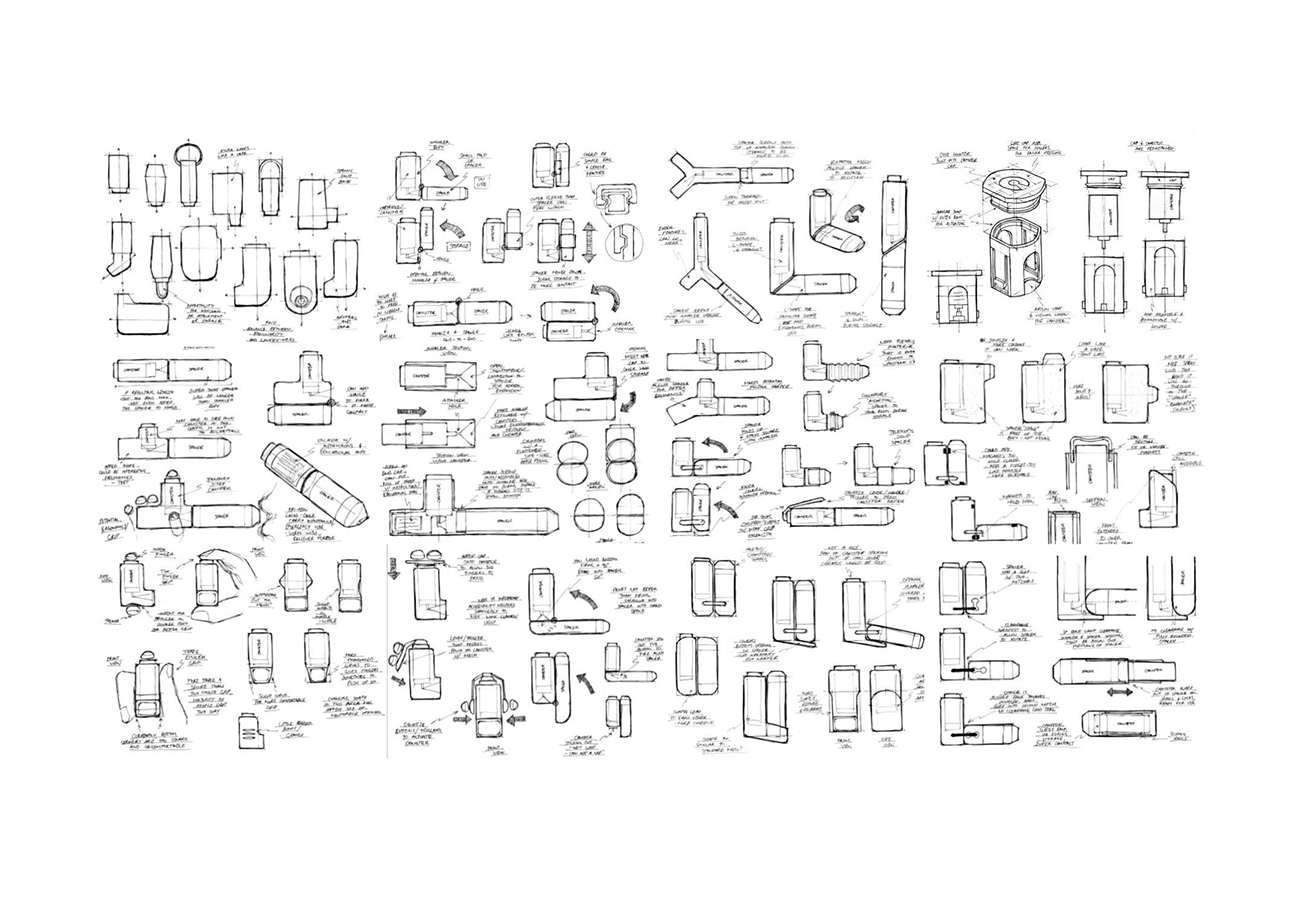The development of Nimbus followed a heavily user-centered design process with a focus on creating and testing numerous iterations to arrive at a well-considered and refined outcome. Research surrounding asthma treatment and inhalers was conducted first, bolstered by meetings with asthma educators and people with asthma. Through this research I gained a breadth of knowledge on the asthma and its treatment. Especially, this research and my own experience with asthma, helped me develop a deep understanding on people’s pain points and their nuanced frustrations with using their asthma inhalers.
Using these insights, a wide range of asthma inhaler concepts were developed and iterated through sketches and mockups, to arrive at a chosen concept. Then, the chosen concept was further refined with CAD and 3D printed prototypes to test its functionality and visual. The half a dozen prototypes developed were tested by multiple people throughout the iterative process to refine and validate the overall use process, which is a vital aspect of the design. Other aspects of development were also performed, such as physical stress testing and FEA analysis to validate the strength of components, DFM for injection moulding, and costing analysis to support the economic viability of the product.
The final Nimbus Inhaler design was presented at the Swinburne GradX showcase as a fully finished FDM printed working prototype, alongside a mockup of the Nimbus Hub educational website, accessible via a QR code on the Nimbus device.

